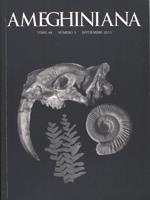The goal of this study is to evaluate ecomorphological variables in glyptodonts from different ages (Miocene to early Holocene), clades, and sizes, with the purpose of inferring their habitats and feeding habits. The analyses included estimation of body masses and three variables: relative muzzle width (RMW), hypsodonty index (HI), and dental occlusal surface area (OSA). RMW allows the distinction of two main groups: the small-sized early Miocene propalaehoplophorids were selective feeders, while the larger post-Miocene forms were more bulk feeders. The Pleistocene Glyptodon appears as an exception, implying a reversion to a selective feeding behavior. The relation between RMW and HI allows discriminating feeding niche partitioning in glyptodonts. Among the early Miocene propalaehoplophorids, Eucinepeltus would have been a highly selective feeder in relatively closed environments, Propalaehoplophorus a highly selective feeder in moderately open habitats, and Cochlops a less selective feeder in moderately open habitats. Among the large Pliocene and Pleistocene taxa, cf. Neuryurus and Neosclerocalyptus were probably bulk feeders in relatively open environments, while Panochthus and Doedicurus were bulk feeders in open environments. Alternative interpretations can be assessed for Glyptodon: it was a more selective feeder in closer habitats, or had a different feeding behavior, browsing on specific plants at higher levels from the ground, and/or a specialized physiology. The late Miocene and Pliocene forms (Hoplophractus, Eosclerocalyptus, and Urotherium) were probably intermediate between the Miocene and the Pleistocene ones.
How to translate text using browser tools
1 September 2011
Evaluating Habitats and Feeding Habits Through Ecomorphological Features in Glyptodonts (Mammalia, Xenarthra)
Sergio F. Vizcaíno,
Guillermo H. Cassini,
Juan C. Fernicola,
M. Susana Bargo
ACCESS THE FULL ARTICLE

Ameghiniana
Vol. 48 • No. 3
September 2011
Vol. 48 • No. 3
September 2011
Aparato masticatorio
Cingulata
Mammalia
Masticatory apparatus
Paleoecología
Paleoecology




